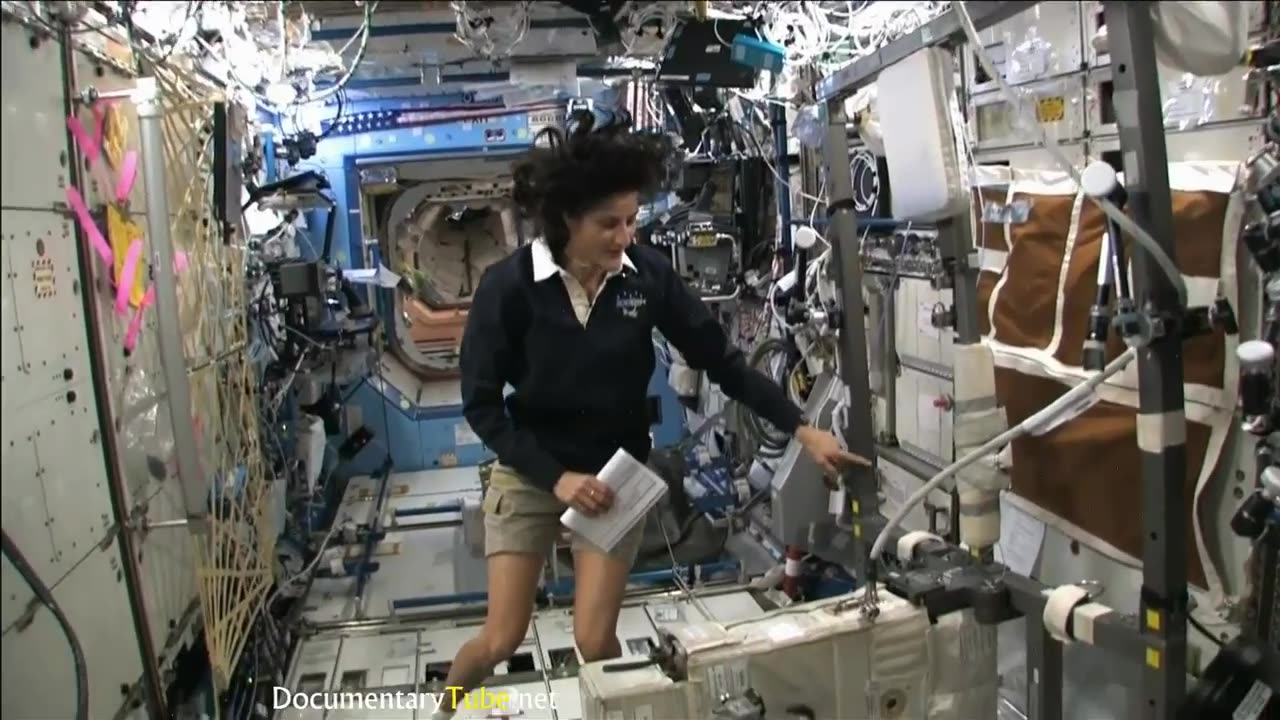Premium Only Content

HOW IT WORKS: The International Space Station
The International Space Station (ISS) is a multinational space station that serves as a research laboratory and living space for astronauts from different countries. Here is a general overview of how the ISS works:
1. Construction and Components: The ISS is a collaborative project involving space agencies from the United States, Russia, Europe, Japan, and Canada. It was assembled in space over several years, with the first module launched in 1998. The station consists of multiple modules, including living quarters, laboratories, storage areas, and docking ports for visiting spacecraft.
2. Orbit and Crew: The ISS orbits the Earth at an altitude of around 408 kilometers (253 miles) in a near-circular orbit. It travels at a speed of approximately 28,000 kilometers per hour (17,500 miles per hour). The station is typically crewed by a team of astronauts and cosmonauts from various countries, who live and work on board for extended periods.
3. Resupply Missions: The ISS requires regular resupply missions to deliver food, water, fuel, scientific experiments, and other necessary supplies. These missions are conducted by various spacecraft, including the Russian Progress, American SpaceX Dragon, and Northrop Grumman Cygnus.
4. Scientific Research: The primary purpose of the ISS is to conduct scientific research in microgravity conditions. Astronauts perform experiments in various fields, including biology, physics, chemistry, medicine, and technology development. The unique environment of the ISS allows scientists to study the effects of long-duration space travel on the human body and conduct experiments that are not possible on Earth.
5. Maintenance and Upkeep: The ISS requires regular maintenance and repairs to ensure its functionality and safety. Astronauts conduct spacewalks (extravehicular activities) to perform repairs, replace equipment, and upgrade systems. The crew also maintains the life support systems, including air purification, water recycling, and waste management.
6. International Collaboration: The ISS is a symbol of international cooperation, with multiple countries contributing modules, resources, and expertise. The partner space agencies work together to operate the station, share research findings, and coordinate crew rotations and mission planning.
7. Communication and Ground Control: Communication between the ISS and mission control centers on Earth is crucial for crew support, guidance, and coordination. Ground control monitors the station's systems, provides real-time assistance, and oversees mission operations.
The International Space Station serves as a platform for advancing scientific knowledge, testing technologies, and preparing for future long-duration space missions, such as missions to the Moon and Mars.
-
 LIVE
LIVE
Rebel News
1 hour agoNo trade deal for Carney, Christian cancelled in BC Bible Belt, Liberal bail reform | Rebel Roundup
352 watching -
 LIVE
LIVE
The Drew Allen Show on DailyClout
45 minutes ago"Russiagate Is ‘Crime of the Century’"
82 watching -
 1:20:41
1:20:41
Steven Crowder
4 hours agoBill Burr Flames Out on Conservatives, Whites, and... Ben Shapiro
132K93 -
 56:58
56:58
The Rubin Report
3 hours agoHow to Protect Yourself from Toxic Beliefs | Eckhart Tolle
27.7K24 -
 LIVE
LIVE
The Mel K Show
2 hours agoMORNINGS WITH MEL K -Collateral Consequences of The Russia Hoax Must Be Addressed! 8-1-25
1,111 watching -
 LIVE
LIVE
Film Threat
17 hours agoTHE NAKED GUN BLOWS COMEDY | Film Threat Livecast
141 watching -
 LIVE
LIVE
Flyover Conservatives
12 hours agoAVOID BURNOUT: Why You Must View Your Work As Worship - Clay Clark | FOC Show
219 watching -
 36:09
36:09
Rethinking the Dollar
2 hours agoU.S. Job Market Fails—Real Talk on Gold, Ray Dalio & World ID | Morning Check-In
2.27K5 -
 LIVE
LIVE
JuicyJohns
5 hours ago $1.96 earned🟢#1 REBIRTH PLAYER 10.2+ KD🟢$500 GIVEAWAY SATURDAY!
127 watching -
 59:16
59:16
VINCE
5 hours agoThe Kamala Comeback Is Here | Episode 94 - 08/01/25
180K131